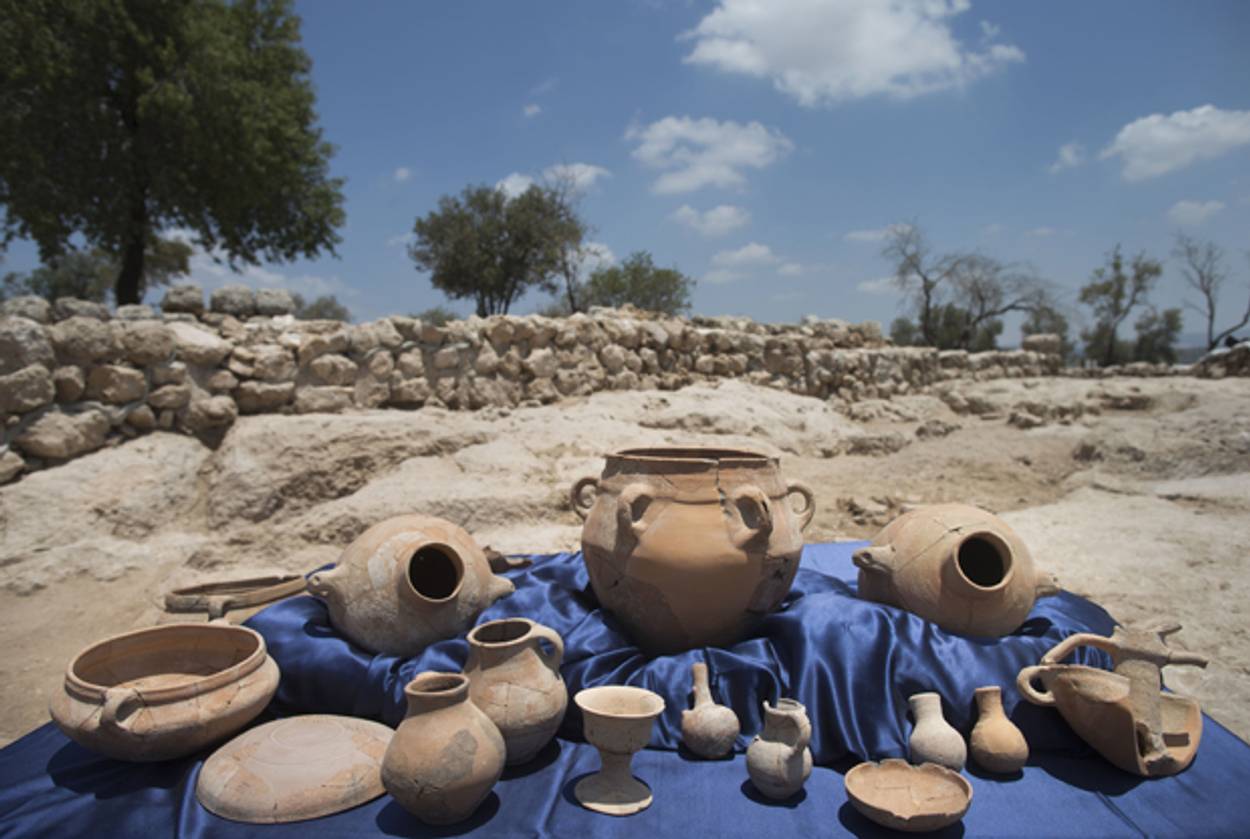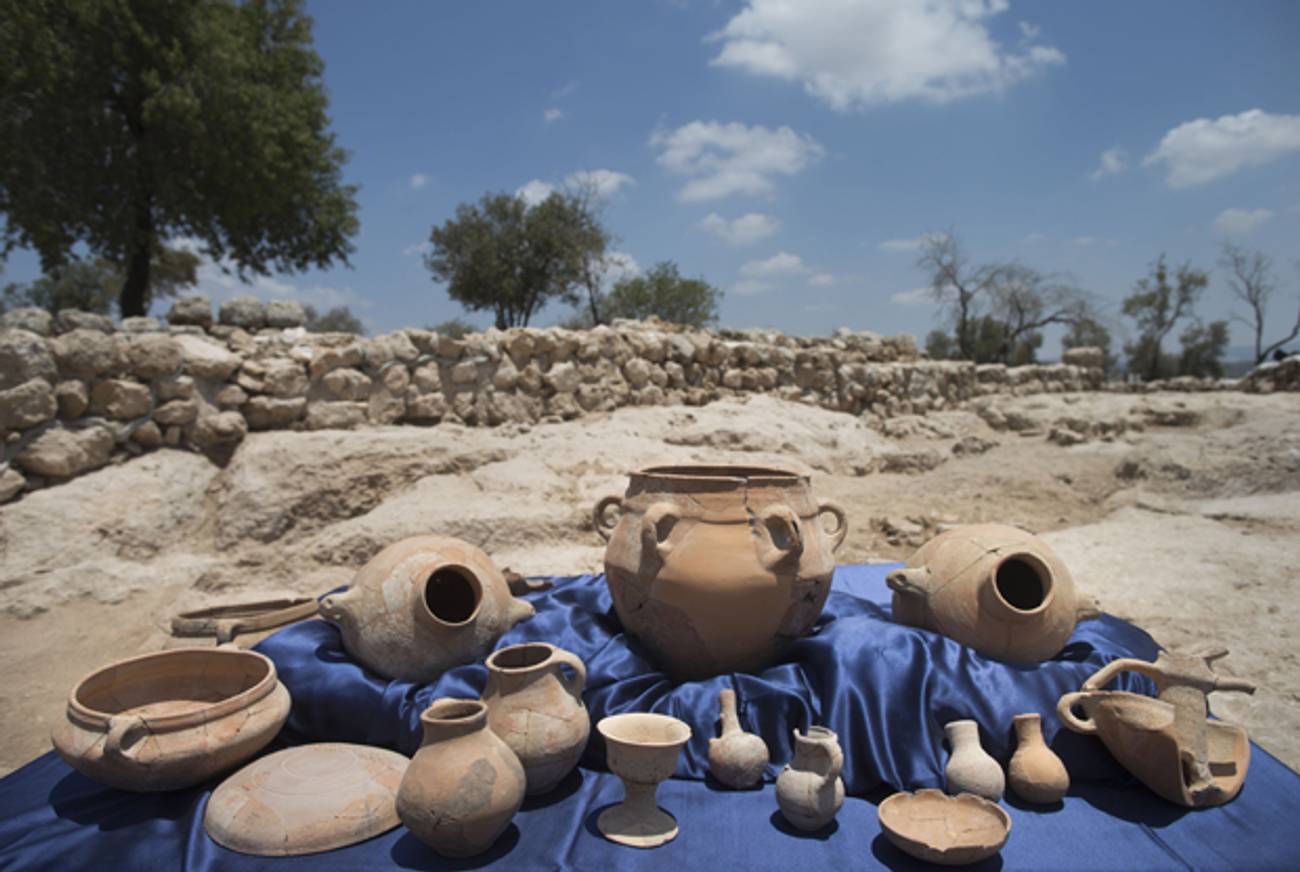King David’s Palace May Have Been Discovered
Israeli archaeologists report ‘unequivocal evidence’ near Jerusalem




Just 18 miles southwest of Jerusalem in Khirbet Qeiyafa, archeologists from Hebrew University and Israel Antiquities Authorities believe that they have found King David’s palace, the Associated Press reports.
“Khirbet Qeiyafa is the best example exposed to date of a fortified city from the time of King David,” said Yossi Garfinkel, a Hebrew University archaeologist, suggesting that David himself would have used the site. Garfinkel led the seven-year dig with Saar Ganor of Israel’s Antiquities Authority.
The archeologists said they have “unequivocal evidence,” discovering objects historically used by Judeans on the site, and “no trace of pig remains”—pork, naturally, would not have been found in King David’s palace. Not everyone agrees with the evidence, however. Some believe that the palace could have belonged to a different ancient ruler.
In 2005, another archeologist claimed to have found King David’s palace in East Jerusalem, the New York Times reported. Those findings were met with uncertainty as well.
Other scholars are skeptical that the foundation walls discovered by the archaeologist, Eilat Mazar, are David’s palace. But they acknowledge that what she has uncovered is rare and important: a major public building from around the 10th century B.C., with pottery shards that date to the time of David and Solomon and a government seal of an official mentioned in the book of Jeremiah.
Garfinkel and Ganor found a second large structure that is said to be a storage space for the palace, the Jerusalem Post reports.
Recent excavations at Khirbet Qeiyafa, the first early Judean city to be dated by 14C, clearly indicate a well planned fortified city in Judah as early as the late 11th-early 10th centuries BC. This new data has far reaching implication for archaeology, history and biblical studies.
Israel Antiquities Authority and the National Parks Association have worked together to name the site a national park, forbidding the construction of a neighborhood nearby.
Romy Zipken is a writer and editor at Jewcy. Her Twitter feed is @RomyZipken.